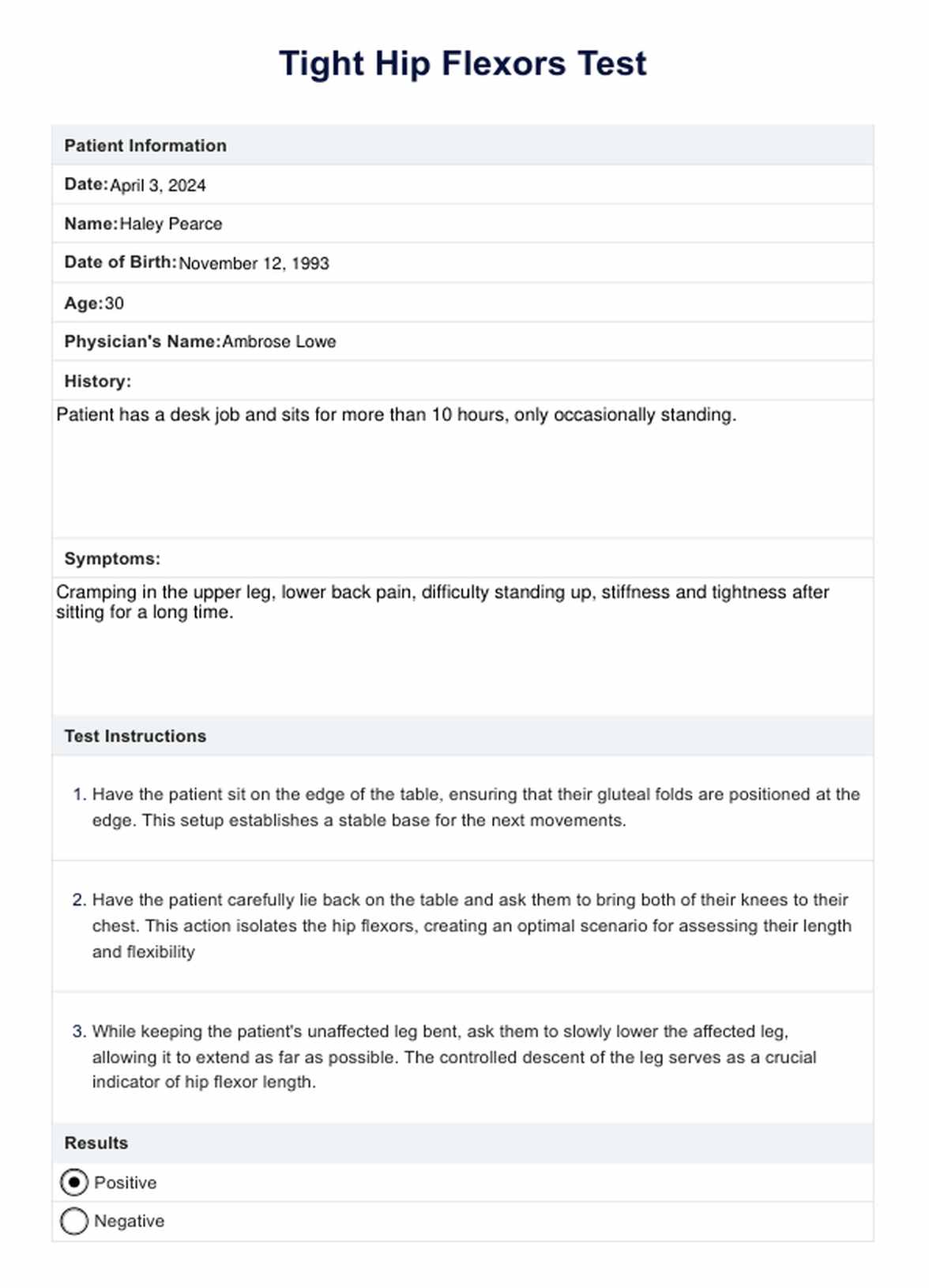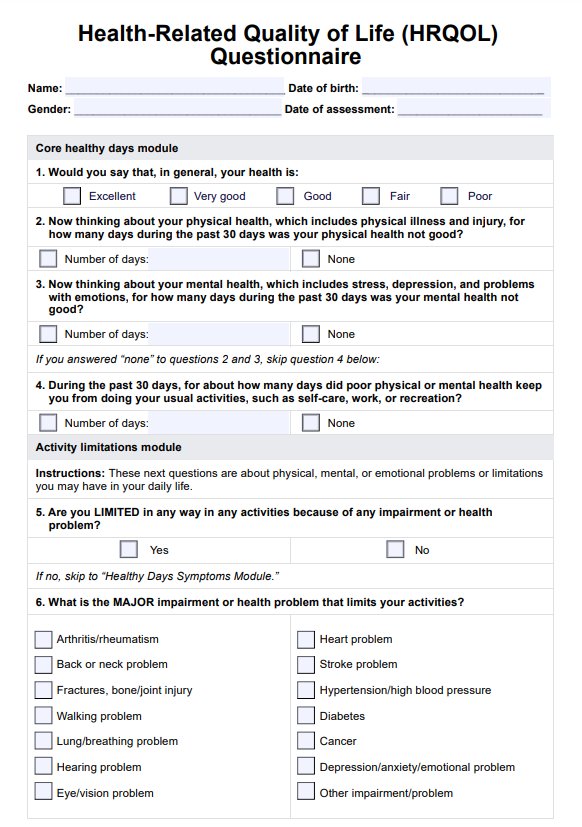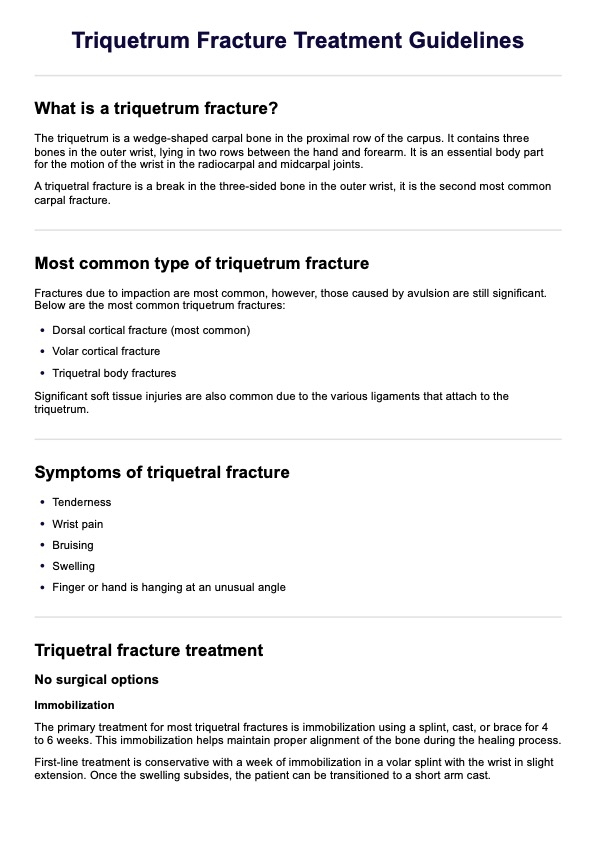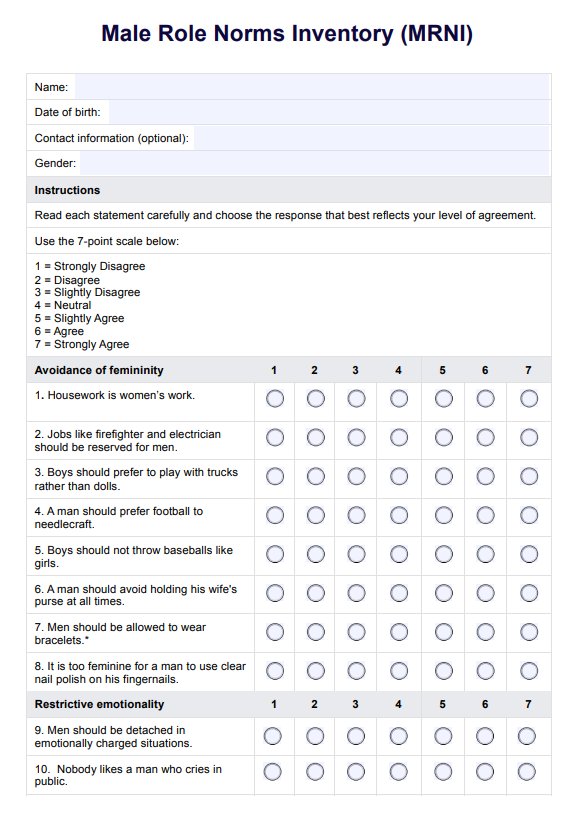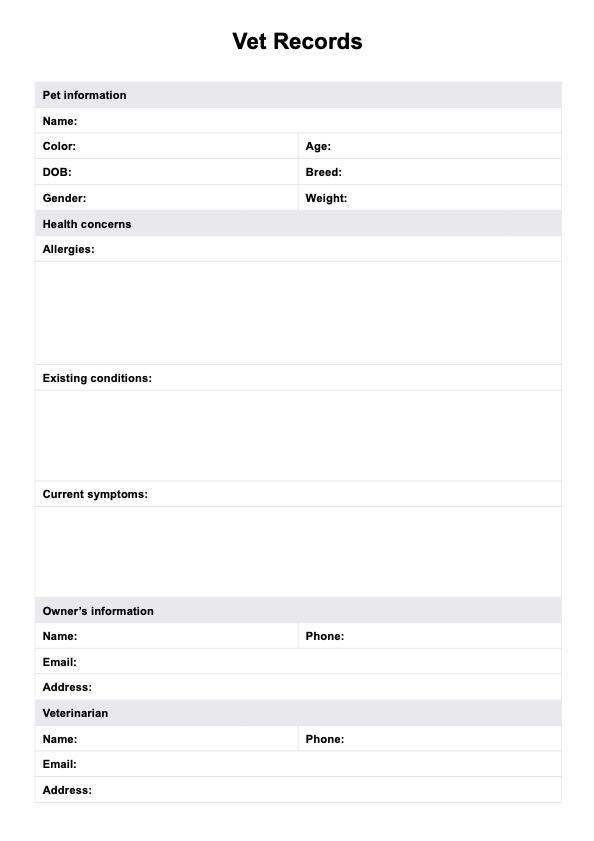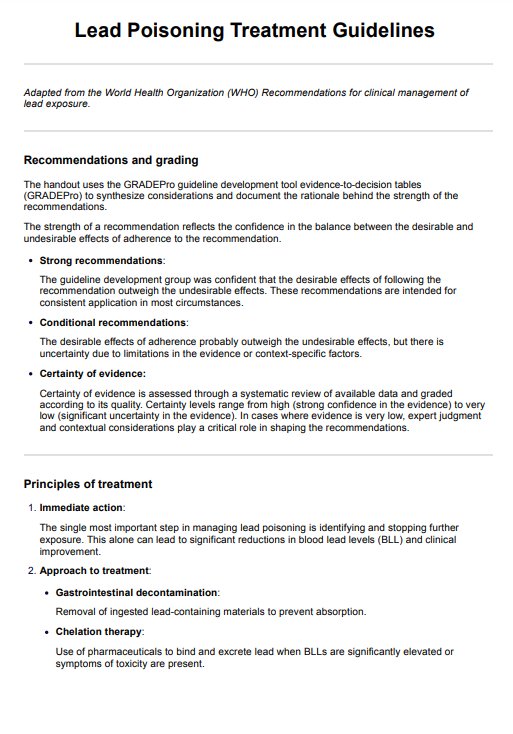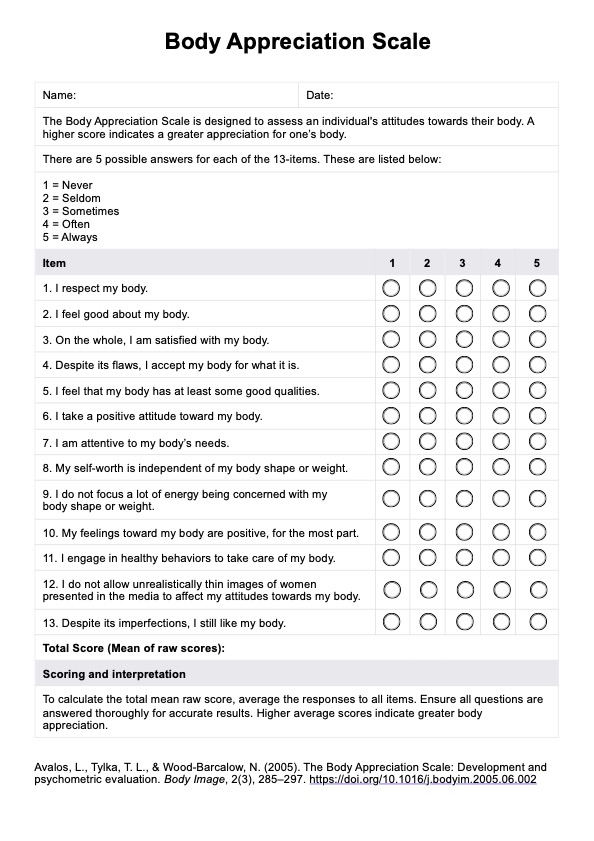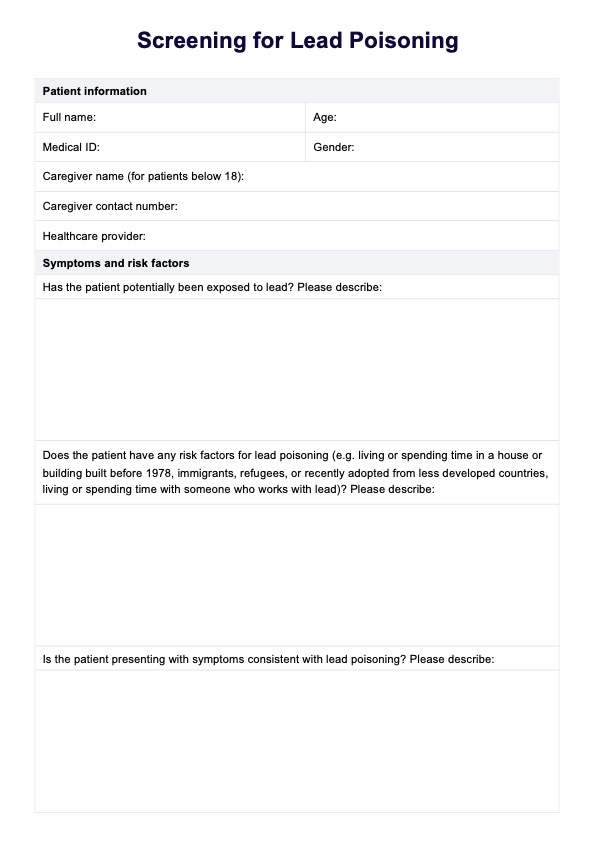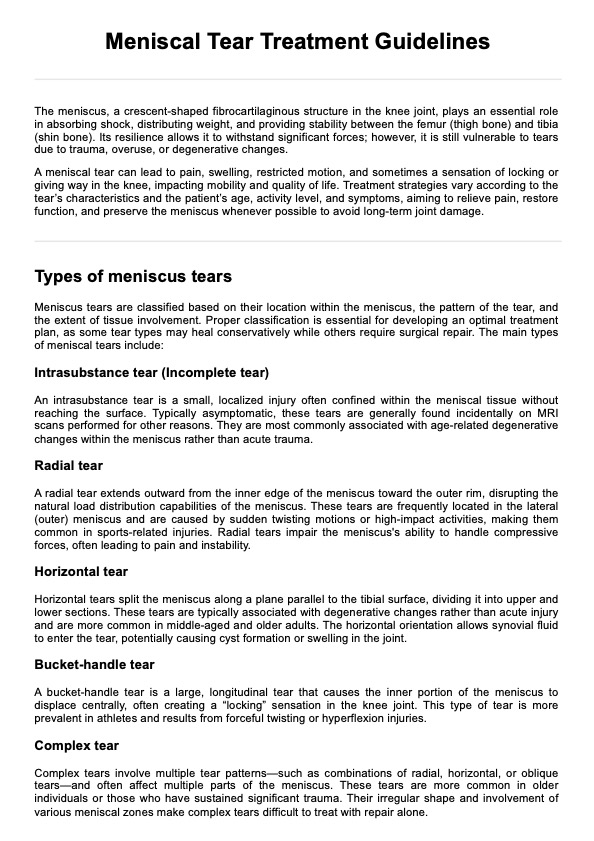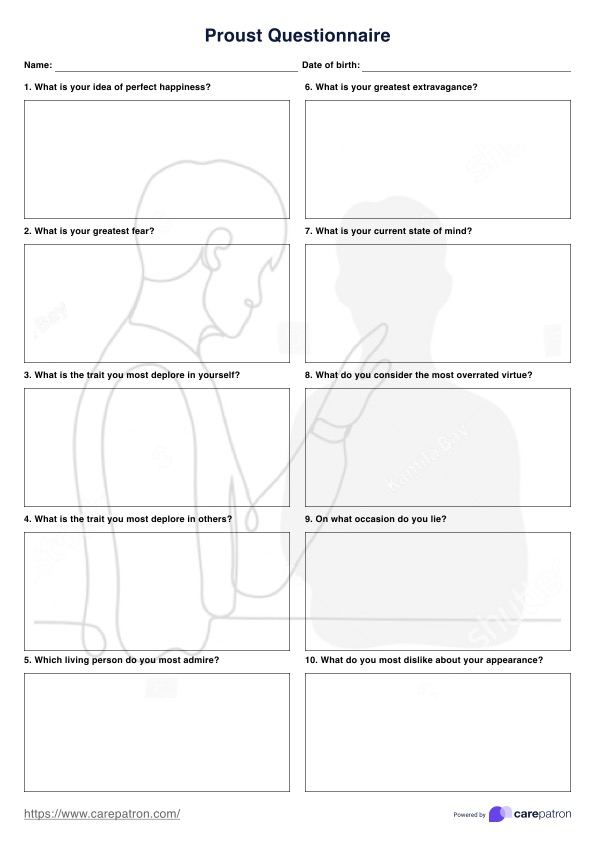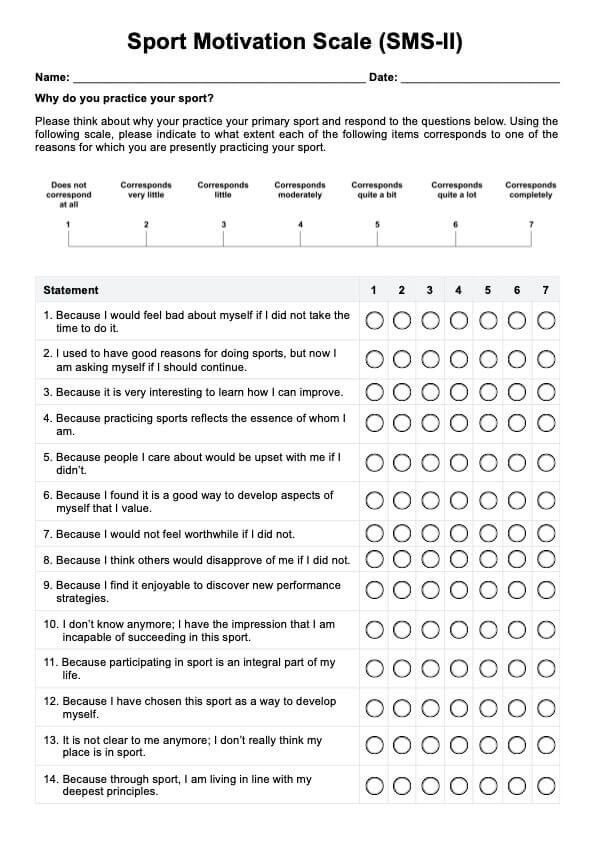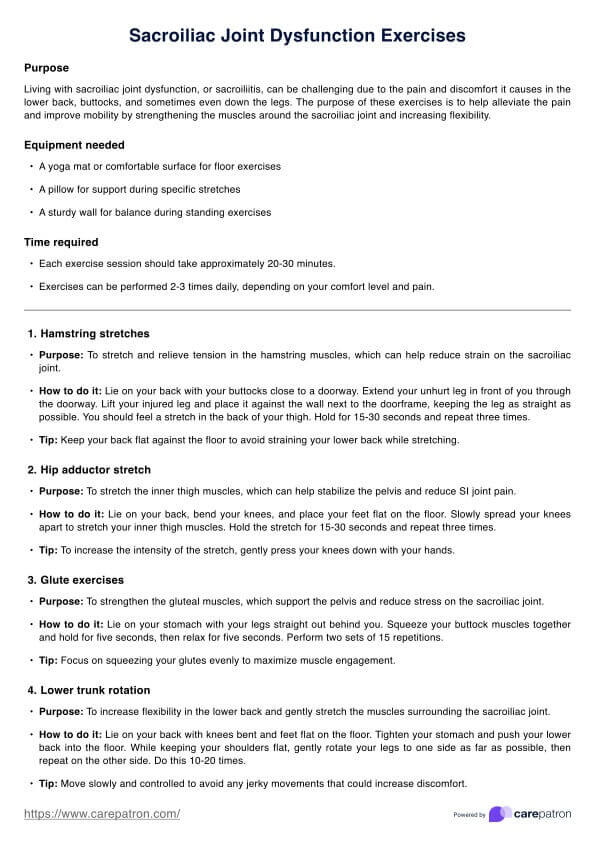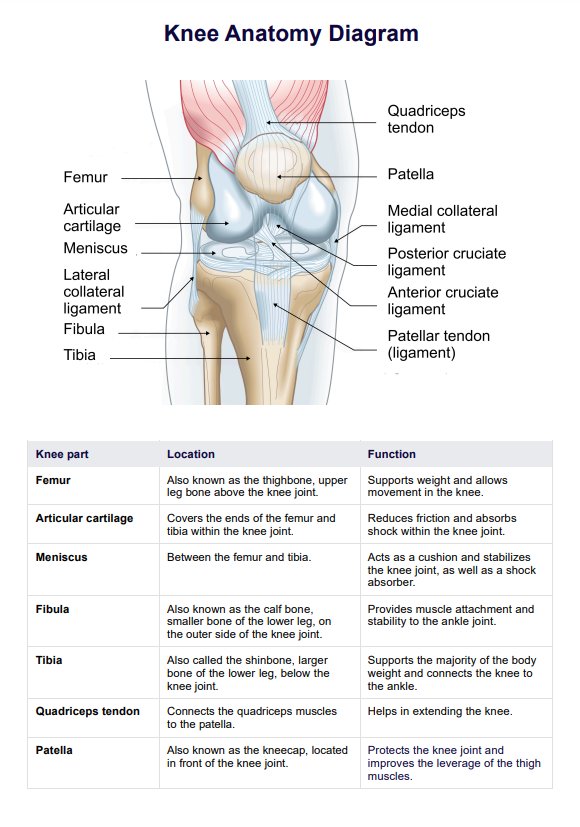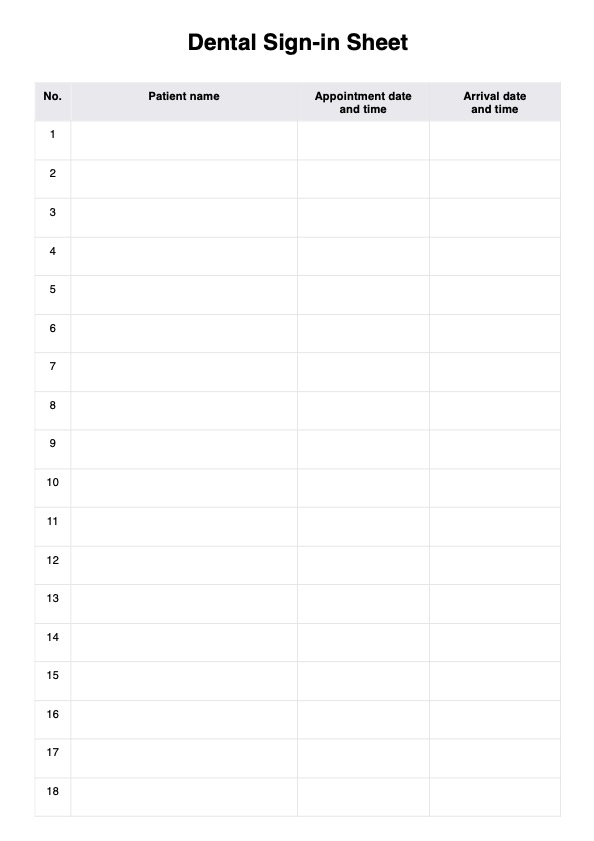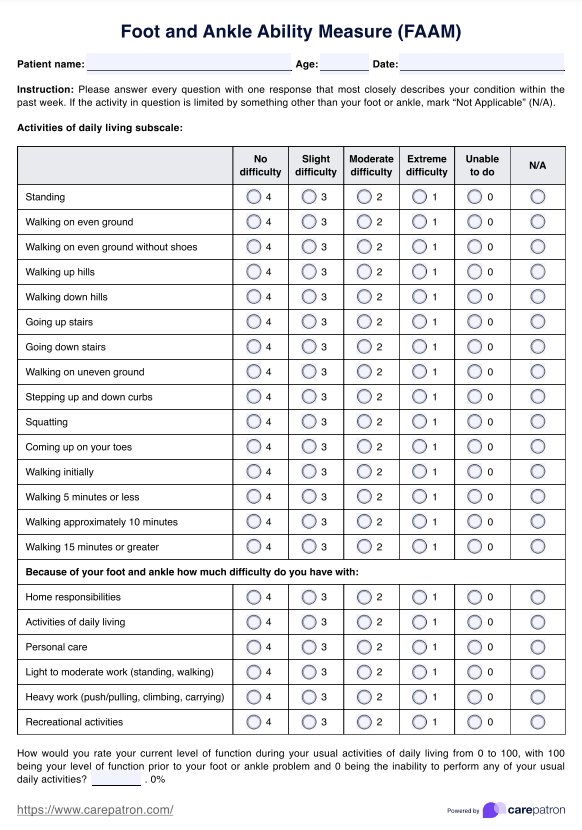Tight Hip Flexors Test
Assess the tightness of your patient's hip flexor muscles with a tight hip flexors test. Click here for a guide and free template!


What is the hip joint?
The hip joint is a pivotal structure within the human body, facilitating a delicate balance between mobility and stability. Situated at the meeting point of the trunk and lower limbs, the hip joint plays a fundamental role in a myriad of daily activities, ranging from simple ambulation to more complex movements like running, jumping, and dancing.
Understanding the hip joint's structure and function is imperative for healthcare professionals, physiotherapists, athletes, and individuals seeking to maintain optimal musculoskeletal health. Injuries or conditions affecting the hip joint can significantly impact mobility and quality of life, underscoring the importance of preventive measures, rehabilitation, and timely medical intervention when needed.
What does it mean to have a tight hip?
The sensation of tight hips encapsulates a distinct feeling of tension enveloping the hip flexors, a cluster of muscles situated at the upper thighs that bridge the upper leg to the hip. These vital muscles orchestrate pivotal movements, enabling the bending at the waist and the elevation of the leg. Among the primary actors in this biomechanical ensemble are the iliopsoas, rectus femoris, tensor fasciae lata, and sartorius.
Tight hips pose a tangible risk of injury, as the heightened demands on inadequately moving tissues can compromise their integrity. When hindered by tightness, the intricate interplay of these muscles may disrupt the fluidity of movement and predispose individuals to musculoskeletal issues.
What problems can a tight hip cause?
The repercussions of tight hips extend far beyond mere discomfort, encompassing a spectrum of musculoskeletal issues that can significantly impact daily life. Understanding the potential problems associated with tight hips is crucial for those seeking to mitigate the consequences and maintain optimal physical well-being.
- Lower back pain: Tight hip flexors impose an additional burden on the muscles and ligaments of the lower back, causing pain and discomfort.
- Knee pain: The alignment of the entire leg, from the thigh bone to the knee and ankle, can be disrupted by tight hips, leading to imbalances and subsequent knee pain.
- Sciatica: Tight hip muscles have the potential to compress the sciatic nerve causing pain, numbness, or tingling sensations in the lower back, buttocks, hips, and legs, creating a complex and often debilitating condition known as sciatica.
- Posture problems: Tight hips can instigate postural issues by tilting the pelvis forward in an anterior pelvic tilt.
- Reduced mobility: Restricted hip flexibility limits the ability to perform certain movements or exercises, like walking or running, due to hindered muscles for hip extension, impeding functional mobility and potentially hindering one's ability to engage in physical activities.
- Pain in other areas: The pivotal role of the hips in the body's biomechanics means that tight hips can reverberate throughout the musculoskeletal system, inducing stress in areas such as the back, knees, feet, and shoulders.
Tight Hip Flexors Test Template
Tight Hip Flexors Test Example
What is a Tight Hip Flexors Test?
The Tight Hip Flexors Test also known as the Thomas Test stands as a valuable tool in the realm of physical examination. It can assess hip tightness and offers insights into the length and flexibility of hip flexors while discerning between the characteristics of one-joint and two-joint muscles.
There are multiple ways to perform the test. Here are instructions for one of them:
- Have the patient sit on the edge of the table, ensuring that their gluteal folds are positioned at the edge. This setup establishes a stable base for the next movements.
- Have the patient carefully lie back on the table and ask them to bring both of their knees to their chest. This action isolates the hip flexors, creating an optimal scenario for assessing their length and flexibility.
- While keeping the patient's unaffected leg bent, ask them to slowly lower the affected leg, allowing it to extend as far as possible. The controlled descent of the leg serves as a crucial indicator of hip flexor length.
How are the results interpreted?
If, during the test, the unaffected leg remains flat on the table, and the knee of the affected leg can bend to a range of 70-90 degrees, it suggests that the client has a negative result because there's no hip flexion deformity and their hip flexors are not excessively tight.
What are the next steps after conducting the test?
Upon the completion of the Thomas Test, here are subsequent courses of action based on the specific results obtained:
- Positive Test Results: Should the Thomas Test yield positive results, signifying tight hip flexors, a targeted program of targeted exercises and stretches, as well as modification of lifestyle factors contributing to tight hip flexors, becomes paramount to enhance flexibility and mitigate the associated issues.
- Negative Test Results: In cases where the Thomas Test yields negative results, indicating normal hip flexor length, specific actions may not be immediately necessary.
- Unclear Results or Test-Induced Hip Pain: If the Thomas Test results are inconclusive or if the individual experiences discomfort during the evaluation, seeking further evaluation from a healthcare professional is highly recommended.
Applying this Thomas test template can refine your practice and optimize client outcomes.
How does our Tight Hip Flexors Test template work?
Using a tight hip flexors test template provides a systematic approach to evaluating and accurately recording results, facilitating a comprehensive assessment of hip flexor flexibility. Follow these step-by-step instructions to utilize the template effectively:
Step one: Access the template
Begin by navigating to Carepatron's template library and locating the tight hip flexors test template. Alternatively, you can click the "Download Template" button to get your hands on a copy. Either option will give you access to a copy that's ready for immediate use.
Step two: Review instructions
Familiarize yourself with the instructions outlined in the template. Pay close attention to the specific steps involved in conducting the test. This preliminary review ensures clarity and consistency throughout the evaluation process.
Step three: Conduct the test
After setting up a suitable environment conducive to conducting the test and positioning the patient, follow the prescribed steps outlined in the template to perform the tight hip flexors test accurately. Apply gentle pressure and stabilization as necessary to maintain proper positioning and alignment throughout the evaluation. Monitor the patient's response and comfort level throughout the test maneuver.
Step four: Record results
Utilize the designated section of the template to record the tight hip flexors test results meticulously. Document relevant data, including measurements of hip flexor flexibility and any observations or feedback the patient provides during the assessment if needed.
Step five: Interpret findings
Analyze the recorded results to gain insights into the patient's hip flexor flexibility and potential areas of concern. If available, compare findings to established norms or benchmarks to contextualize the assessment outcomes and inform treatment planning.
Step six: Documenting recommendations
Utilize the template to document recommendations for follow-up care or interventions based on the assessment findings. Provide clear and actionable guidance tailored to the individual patient's needs, emphasizing targeted exercises, stretching routines, or lifestyle modifications to address identified issues.
Benefits of taking a Tight Hip Flexors Test
Engaging in a tight hip flexors test yields many advantages that extend beyond the immediate realm of musculoskeletal health. Here are some of them:
Identifying muscle imbalances
The tight hip flexors test is a discerning lens, pinpointing potential muscle imbalances within the body. Detection of these imbalances is pivotal, as they can underlie discomfort and impede fluid movement. With this knowledge, individuals can embark on targeted interventions to restore equilibrium and promote optimal musculoskeletal function.
Preventing injuries
Early identification of tight hip flexors lays the foundation for proactive measures to address the issue and stave off potential injuries. By mitigating tightness through tailored exercises and stretches, individuals create a shield against the risk of injuries that may arise due to compromised flexibility and altered biomechanics.
Improving athletic performance
If left unaddressed, tight hip flexors can curtail the range of motion and impede athletic prowess. The test becomes a strategic ally for athletes, facilitating identifying and resolving limitations that may hinder speed, explosiveness, and overall performance. Individuals can unlock their athletic potential and elevate their capabilities through targeted interventions.
Guiding treatment plans
The tight hip flexors test results offer a roadmap for healthcare professionals in crafting effective treatment plans. These plans may encompass a repertoire of exercises and stretches specifically tailored to address the identified tightness, aligning interventions with individual needs and optimizing therapeutic outcomes.
Evaluating treatment effectiveness
For those already immersed in exercises or treatments targeting tight hip flexors, the test assumes a diagnostic role in assessing the effectiveness of ongoing interventions. This iterative evaluation ensures that the chosen strategies align with the individual's progress, allowing for timely adjustments and refinements to the treatment plan.
Reducing pain
Tight hip flexors can manifest as pain in various regions, including the lower back, hips, and knees. The tight hip flexors test becomes a conduit for pain reduction by uncovering the root cause and guiding interventions to alleviate tightness, restoring comfort and functionality to affected areas.
How can to address hip flexor tightness?
Tackling the challenge of tight hip flexors necessitates a multifaceted approach, encompassing a blend of stretching, strengthening, and lifestyle adjustments to restore flexibility and functionality to this crucial part of the body. Here are strategic interventions that may prove beneficial:
Stretching and strengthening exercises
Stretching and strengthening exercises are pivotal in addressing tight hips and weak hip flexors, offering a multifaceted approach to enhance flexibility, prevent injuries, and improve mobility. By targeting the hip flexors through specific stretches, individuals can:
- Alleviate the tightness that often hampers day-to-day activities such as walking, sitting, or jumping, thereby restoring ease of movement and functionality.
- Protect potential injuries, mitigating the risk of lower back pain, hip discomfort, and musculoskeletal injuries.
- Expand the joint's range of motion, which is crucial for optimal mobility and fluid movement.
- Strengthen the hip flexors, bolstering core stability, reducing lumbar spine pain, and fortifying against future injuries, thereby fostering overall musculoskeletal health.
Lifestyle modifications
Lifestyle modifications such as weaving more movement into one's daily routine, like standing, walking, or engaging in gentle stretches, can be instrumental in preventing hip flexor tightness, especially if prolonged sitting is a recurrent aspect of their day. It counteracts the effects of sedentary behavior and contributes to the overall health of the hip flexors.
Commonly asked questions
Though they can, with the right exercises, these exercises must be recommended by a healthcare professional.
Diagnosing tight hip flexors may require asking about the patient's medical history or lifestyle, followed by imaging work.
The special test used by healthcare professionals to check hip tightness is called the Thomas test.



